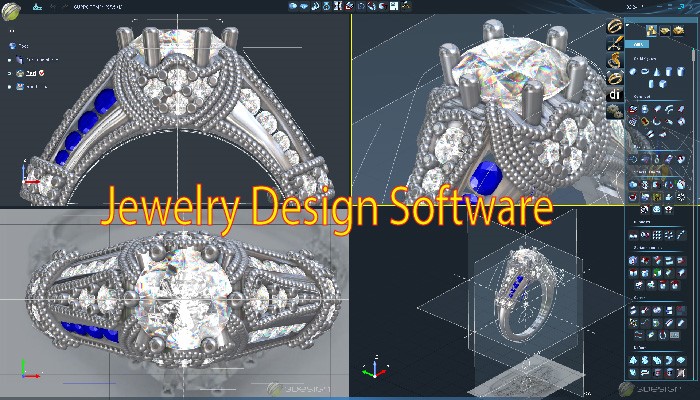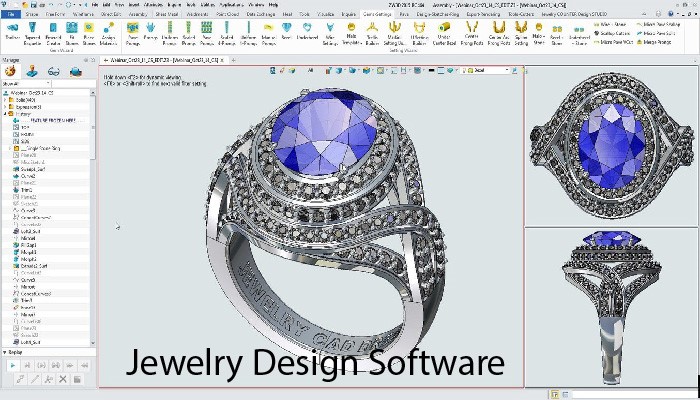Unlocking Creativity: The Power of Jewelry Design Software
In the age of digital revolution, technology has pervaded every aspect of our lives, transforming industries and shaping new paradigms. The realm of jewelry design is no exception. Gone are the days when jewelry design was confined to the realm of paper sketches and physical prototypes. Today, designers wield powerful digital tools that not only streamline the design process but also unleash boundless creativity. Enter jewelry design software – a game-changer in the world of adornment creation.

Understanding Jewelry Design Software
Evolution of Design Tools
Jewelry design software has come a long way from its nascent stages. Initially, designers relied on manual drafting techniques, painstakingly sketching each design by hand. However, with the advent of computer-aided design (CAD) software, the landscape shifted dramatically. CAD brought precision, efficiency, and scalability to the design process, allowing designers to create intricate pieces with unparalleled accuracy.
Features and Capabilities
Modern jewelry design software is a marvel of technological innovation, offering a plethora of features tailored specifically to the needs of designers. From robust 3D modeling tools to advanced rendering capabilities, these software packages empower designers to bring their visions to life with stunning realism. Additionally, many platforms incorporate intuitive interfaces and customizable workflows, ensuring a seamless user experience for both seasoned professionals and aspiring artisans alike.
Integration with Manufacturing Processes
One of the key advantages of jewelry design software is its seamless integration with manufacturing processes. By generating detailed digital models, designers can easily communicate their designs to manufacturers, eliminating the need for cumbersome physical prototypes. Moreover, software platforms often support file formats compatible with various fabrication techniques, including 3D printing, CNC machining, and traditional casting methods, thereby streamlining the production process from design to finished product.
The Impact on Designers
Unleashing Creativity
Jewelry design software serves as a catalyst for creativity, empowering designers to explore new aesthetic frontiers and push the boundaries of conventional design. With an array of tools at their disposal, designers can experiment with shapes, textures, and materials in ways that were previously unimaginable. Whether crafting avant-garde statement pieces or timeless classics, the only limit is the designer’s imagination.
Efficiency and Productivity
In addition to fostering creativity, jewelry design software enhances efficiency and productivity in the design process. Tasks that once required hours of painstaking labor can now be completed in a fraction of the time, thanks to automated features and streamlined workflows. This newfound efficiency not only accelerates the pace of design iteration but also allows designers to focus more energy on innovation and experimentation.
Accessibility and Inclusivity
Another notable impact of jewelry design software is its role in democratizing the field of jewelry design. Whereas traditional methods often required expensive equipment and specialized training, modern software platforms are increasingly accessible to a broader audience. This accessibility not only lowers barriers to entry for aspiring designers but also promotes diversity and inclusivity within the industry, as individuals from diverse backgrounds can now participate in the creative process.
Challenges and Opportunities
Technical Complexity
Despite its myriad benefits, jewelry design software is not without its challenges. For many designers, particularly those accustomed to traditional methods, mastering the technical intricacies of digital tools can be daunting. From navigating complex interfaces to troubleshooting software glitches, there is a learning curve associated with adopting new technology. However, with proper training and support, designers can overcome these challenges and unlock the full potential of jewelry design software.
Market Saturation
As the popularity of jewelry design software continues to soar, the market has become increasingly saturated with a multitude of competing platforms. While this abundance of choice offers designers unprecedented flexibility, it also presents a challenge in terms of selecting the right software for their specific needs. Designers must carefully evaluate factors such as functionality, compatibility, and cost to ensure they invest in a software solution that aligns with their creative vision and business objectives.
Emerging Trends and Opportunities
Amidst these challenges, there are also significant opportunities on the horizon for jewelry designers. As technology continues to evolve, so too do the capabilities of jewelry design software. From artificial intelligence-driven design assistants to virtual reality-based collaboration tools, the future promises even greater innovation and sophistication. By staying abreast of emerging trends and embracing new technologies, designers can position themselves at the forefront of the industry and chart new pathways for creative expression.
Conclusion:
Jewelry design software represents a paradigm shift in the way designers conceptualize, create, and produce adornments. By harnessing the power of digital tools, designers can unleash their creativity, enhance efficiency, and expand accessibility within the field. While challenges persist, the opportunities afforded by jewelry design software are boundless, paving the way for a new era of innovation and expression in the world of jewelry design. As technology continues to evolve, so too will the artistry and craftsmanship of adornment creation, propelled ever forward by the transformative potential of software innovation.



